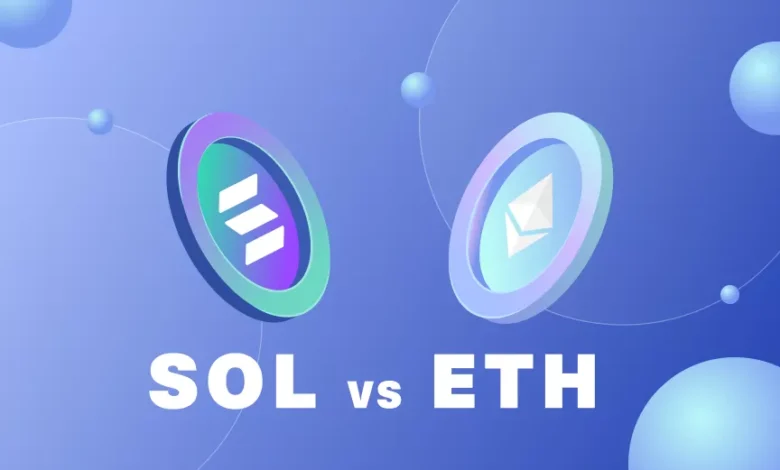Solana USDT vs Ethereum USDT: Which Network Offers Better Speed and Fees?

Introduction
The rise of stablecoins has reshaped how value moves within the cryptocurrency ecosystem. They bridge the gap between the volatility of digital assets and the stability of fiat currencies, making them indispensable for traders, investors, and DeFi users alike. Among all stablecoins, USDT (Tether) remains the most dominant, circulating on multiple blockchains including Ethereum, Tron, and Solana.
However, as the market expands, the performance gap between these networks has grown significantly. Two of the most notable variants — Solana USDT and Ethereum-based USDT (ERC-20) — are now competing for user preference. Each offers unique benefits and trade-offs in terms of transaction cost, speed, scalability, and ecosystem maturity.
This article explores the key differences between the two, helping you decide which is better suited to your needs in 2025 and beyond
1. Background: The Evolution of USDT Across Blockchains
Tether (USDT) was first launched in 2014 as a Bitcoin-based asset using the Omni Layer. While groundbreaking at the time, Bitcoin’s limited transaction capacity quickly became a bottleneck.
The next major leap occurred when Tether launched USDT on Ethereum in 2017 using the ERC-20 token standard. This allowed users to leverage Ethereum’s programmable smart contracts and DeFi ecosystem. However, as Ethereum’s popularity grew, network congestion caused gas fees to skyrocket — creating demand for faster, cheaper alternatives.
This is where Solana USDT enters the picture. Built on the Solana blockchain, it offers near-instant transactions and ultra-low costs, making it ideal for retail users and high-frequency traders alike.
2. Solana vs Ethereum: The Technology Behind the Tokens
Before comparing performance, let’s understand how these blockchains function.
Ethereum
- Consensus: Currently Proof of Stake (PoS) after “The Merge” upgrade.
- Transaction Speed: Around 15–30 transactions per second (TPS).
- Average Fee: Between $0.50 and $20, depending on congestion.
- Block Time: 12–14 seconds.
Solana
- Consensus: Hybrid of Proof of History (PoH) and Proof of Stake (PoS).
- Transaction Speed: Up to 65,000 TPS.
- Average Fee: Less than $0.001 per transaction.
- Block Time: 400–600 milliseconds.
The difference is staggering — Solana processes thousands of transactions in the time Ethereum handles a few dozen. For stablecoin transfers, this difference directly translates into lower costs and better scalability.
3. Transaction Speed: The Real-World Impact
Speed is a critical factor for any financial network. A blockchain that can process transactions instantly offers a clear advantage for traders, developers, and businesses.
- Ethereum USDT: Even after major upgrades, Ethereum’s speed remains moderate. Transactions can take several seconds to minutes during peak times.
- Solana USDT: Transfers are almost instantaneous, often confirming in under a second.
For decentralized exchanges (DEXs), yield farming platforms, or payment applications, this difference can make or break the user experience.
4. Fee Comparison: The Cost of Doing Business
Fees are another major differentiator. Ethereum’s gas fees fluctuate based on network demand. During NFT booms or bull runs, simple token transfers can cost upwards of $20.
In contrast, Solana’s architecture ensures consistently low costs. On average, sending Solana USDT costs less than a fraction of a cent.
| Network | Average Transaction Fee | Confirmation Time |
| Ethereum (ERC-20) | $1 – $20 | 15–60 seconds |
| Solana (SPL) | <$0.001 | <1 second |
This huge gap is one of the main reasons traders and DeFi protocols are migrating to Solana.
5. Ecosystem and Adoption
Ethereum’s Advantage
Ethereum has been around longer and boasts the most mature ecosystem. Thousands of dApps, DeFi protocols, and NFT projects are built on it. Its network effects mean that ERC-20 USDT enjoys widespread support across nearly every exchange and DeFi app.
Solana’s Rapid Growth
Solana, though newer, is expanding rapidly. Platforms like Raydium, Jupiter, and Orca have brought Ethereum-style DeFi experiences to the Solana ecosystem, while Phantom and Solflare have become household names among wallet users.
Despite a few network outages in early years, Solana’s team has made substantial improvements, positioning it as a top-tier blockchain for both developers and enterprises.
6. Security and Network Stability
Security remains one of the top concerns in blockchain ecosystems.
- Ethereum: With thousands of validators and years of proven reliability, Ethereum is one of the most secure networks in existence.
- Solana: While Solana offers advanced cryptographic security, it has occasionally experienced downtime due to overloads or bugs in validator coordination.
Although these issues have become less frequent, it’s worth noting that Ethereum’s long-standing reliability still gives it an edge in terms of perceived safety.
7. DeFi and DEX Integration
Ethereum dominates decentralized finance, hosting giants like Uniswap, Aave, and Curve. USDT on Ethereum is deeply integrated across lending, staking, and trading platforms.
However, Solana is catching up. The growth of DEXs like Serum, Jupiter, and Raydium has made it easier for users to trade Solana USDT with minimal fees.
Moreover, Solana’s design enables much higher transaction throughput, meaning users can trade without suffering the “gas wars” that sometimes cripple Ethereum’s DeFi protocols.
8. Developer Ecosystem and Innovation
Ethereum’s extensive documentation, developer tools, and large open-source community make it ideal for innovators. It has a vast pool of smart contract developers and countless SDKs, APIs, and oracles like Chainlink.
Solana, however, attracts a different kind of developer — those focused on performance, scalability, and Web3 gaming. Its Rust-based programming model offers high efficiency, though it has a steeper learning curve.
Over time, interoperability bridges between Solana and Ethereum (like Wormhole) have helped unify both communities, allowing assets like Solana USDT to move freely between ecosystems.
9. Environmental Efficiency
After Ethereum’s transition to Proof of Stake, its energy consumption dropped by over 99%. Solana, which has always been Proof of Stake-based, is also considered highly energy-efficient.
According to recent estimates:
- Ethereum’s average energy use per transaction is roughly equivalent to 0.002 kWh, about the same as charging a smartphone.
- Solana’s is even lower, at 0.0005 kWh, making it one of the greenest blockchains in operation.
This makes both suitable for the future of sustainable finance, though Solana still edges ahead in raw efficiency.
10. Liquidity and Market Access
Liquidity determines how easily assets can be bought or sold without large price fluctuations.
Ethereum-based USDT has deep liquidity across centralized and decentralized exchanges. Because Ethereum has been the dominant platform for years, it remains the default choice for large institutional traders.
However, liquidity for Solana USDT is rapidly increasing. Major exchanges like Binance, OKX, and KuCoin now support Solana-based deposits and withdrawals. As adoption continues, liquidity is expected to become comparable to Ethereum’s within the next few years.
11. Real-World Use Cases
Both ecosystems are expanding beyond trading:
- Ethereum USDT: Commonly used for institutional settlements, token sales, and DeFi yield strategies.
- Solana USDT: Popular among retail traders, micropayments, and gaming platforms where low fees and fast speeds are crucial.
For example, Solana Pay — a protocol that enables real-time merchant transactions — is a major step toward making Solana-based stablecoins usable for everyday purchases.
12. Network Congestion and Scaling
Ethereum continues to face congestion issues, though upcoming layer-2 solutions like Arbitrum and Optimism aim to solve this. Still, these scaling networks often add complexity for new users.
Solana’s base layer already handles tens of thousands of transactions per second, eliminating the need for secondary scaling layers. However, the trade-off is higher hardware requirements for validators.
This difference highlights the philosophical contrast between the two: Ethereum favors decentralization, while Solana prioritizes performance.
Conclusion
While Ethereum pioneered decentralized finance and remains the most established blockchain for stablecoins, Solana is redefining what’s possible in terms of speed and cost-efficiency.
If your priorities are security, maturity, and compatibility with legacy DeFi, Ethereum USDT is the safer choice. But if you value lightning-fast transfers, minimal fees, and next-generation scalability, Solana USDT stands out as the superior option for the future.
In reality, both ecosystems will likely coexist — Ethereum powering large institutional DeFi, and Solana driving mainstream adoption through accessible, high-speed payments. As the world embraces blockchain at scale, users will increasingly rely on both networks, bridging stability with innovation.





